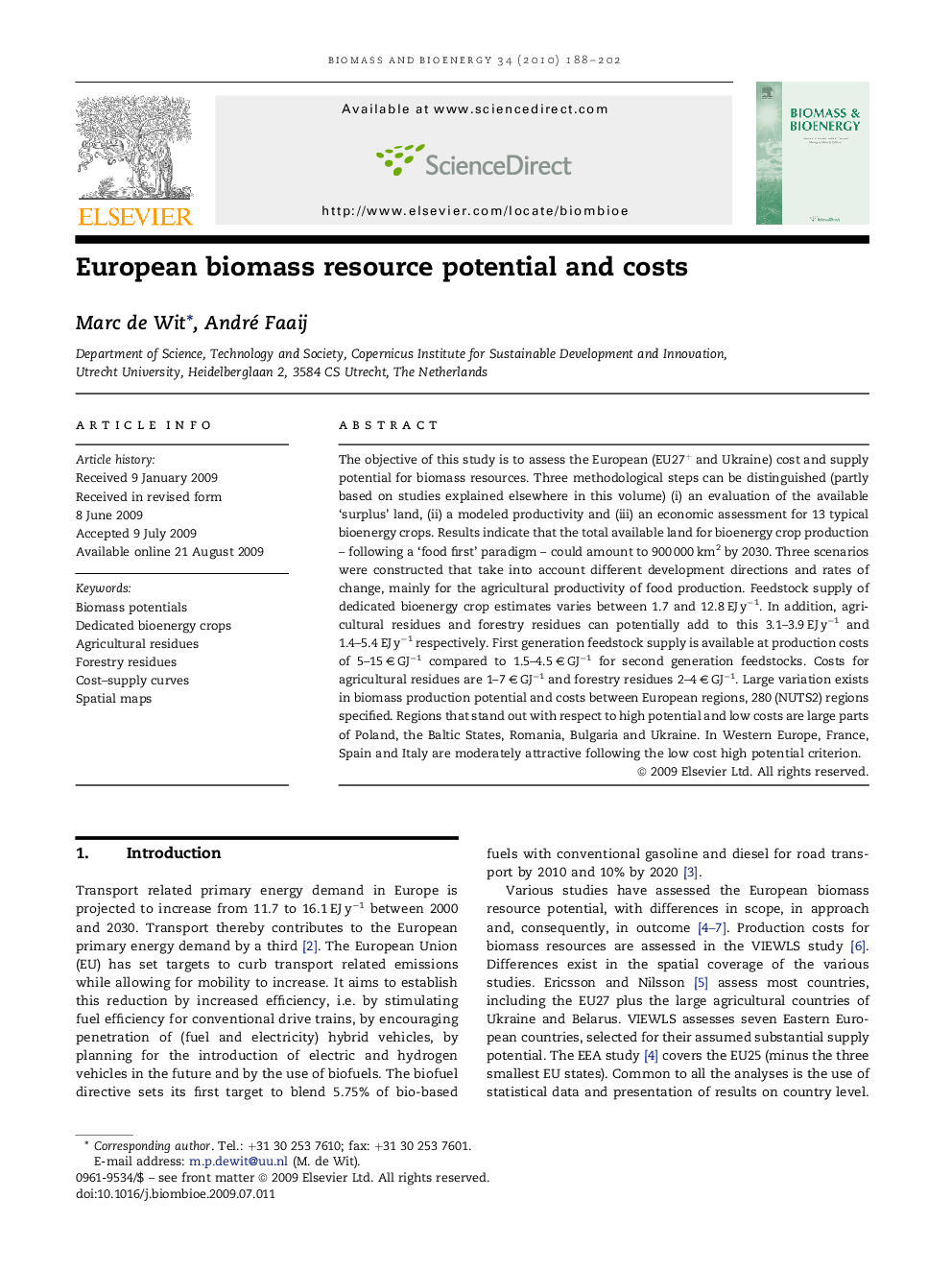| کد مقاله | کد نشریه | سال انتشار | مقاله انگلیسی | نسخه تمام متن |
|---|---|---|---|---|
| 678434 | 888646 | 2010 | 15 صفحه PDF | دانلود رایگان |

The objective of this study is to assess the European (EU27+ and Ukraine) cost and supply potential for biomass resources. Three methodological steps can be distinguished (partly based on studies explained elsewhere in this volume) (i) an evaluation of the available ‘surplus’ land, (ii) a modeled productivity and (iii) an economic assessment for 13 typical bioenergy crops. Results indicate that the total available land for bioenergy crop production – following a ‘food first’ paradigm – could amount to 900 000 km2 by 2030. Three scenarios were constructed that take into account different development directions and rates of change, mainly for the agricultural productivity of food production. Feedstock supply of dedicated bioenergy crop estimates varies between 1.7 and 12.8 EJ y−1. In addition, agricultural residues and forestry residues can potentially add to this 3.1–3.9 EJ y−1 and 1.4–5.4 EJ y−1 respectively. First generation feedstock supply is available at production costs of 5–15 € GJ−1 compared to 1.5–4.5 € GJ−1 for second generation feedstocks. Costs for agricultural residues are 1–7 € GJ−1 and forestry residues 2–4 € GJ−1. Large variation exists in biomass production potential and costs between European regions, 280 (NUTS2) regions specified. Regions that stand out with respect to high potential and low costs are large parts of Poland, the Baltic States, Romania, Bulgaria and Ukraine. In Western Europe, France, Spain and Italy are moderately attractive following the low cost high potential criterion.
Journal: Biomass and Bioenergy - Volume 34, Issue 2, February 2010, Pages 188–202